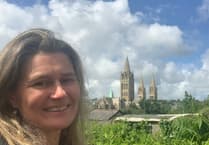I WAS out the other evening after dark, which isn’t hard given the clocks have changed and it seems to be dark before you know it.
I was surprised when, in the gloom, I saw a bat flutter past. I was surprised as I thought they would be hibernating and also that it appeared quite large. I may be wrong given the very low light, but I suspect it was a greater horseshoe, as the flight seemed steady and not the frenzied approach a smaller common pipistrelle might have. In all honesty, we'll never know.
However, greater horseshoes are quite common in Cornwall and especially around Pentire Head, where they are often seen at dusk, after roosting in an old lead and silver mine.
Whatever it was, I’m a big lover of bats. They do hibernate but the current mild weather is probably putting that off for a while. Even during hibernation, in mild spells they will venture out for a while. They can actually travel quite a distance to find a warm winter roost, with some reports suggesting they can go over 50 miles to find a mine shaft or cellar. Even in the summer, they will travel several miles from the roost during feeding.
In general, bats will hibernate pretty seriously from November to February, with some activity starting in March if it’s not too cold. They will become fully active by May and the males and females will split up, the males roosting alone (probably in a pub) and the females looking for a nursery site.
In June, they will give birth to a single pup and feed it on milk, until in July, after just three weeks, the young will start to fly on their own.
By six weeks, they will be catching insects themselves and be weaned off the milk.
In August, the maternal roosts break up and the big month of September arrives – when the mating occurs. It’s a busy month, as the bats are on a mission to build up the fat stores for the hibernation. This continues into October when the search for hibernation sites begins again.
It’s a pretty full year, if you’re a bat.
• Fred Knobbit is a nature blogger. He grew up in the Pennines in Lancashire on the edge of an industrial town but is now safely in Cornwall. You can read his archive at www.bodminblogger.com




